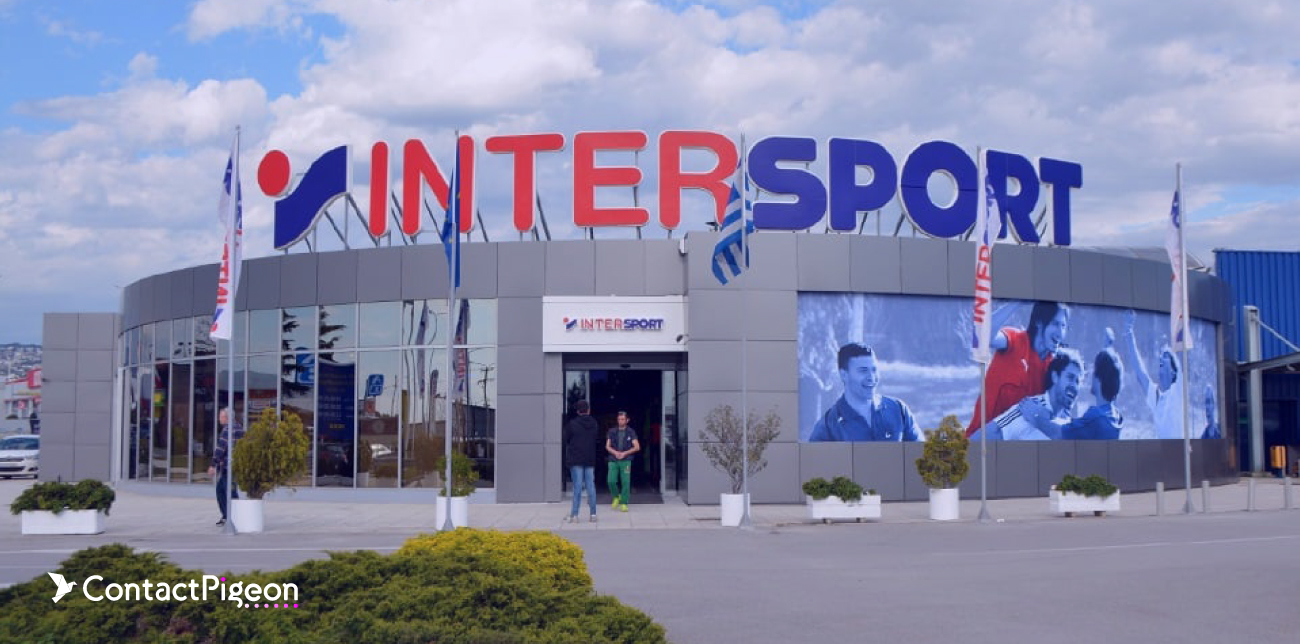When it comes to the high-street fashion brands, Zara dominates the scene. The brand is at the forefront of offering the latest fashion trends, high-quality products and, most importantly to consumers, awesome affordability. So, how did the brand grow from humble beginnings to become the number one fashion retailer in the world — not to mention setting the global standards for success with their Zara eCommerce channel?
Table of Contents
The story might surprise you…
The history of Zara: The connection with Zorba the Greek
It all started in 1963 when Amancio Ortega opened a dress-making factory, Inditex, in Spain.
In 1975, rumor has it that Amancio was armed with a budget of only 30 euros when he decided to open a small store selling his housecoats and robes in northwestern Spain. He named the store Zorba, after the famous film, Zorba the Greek.
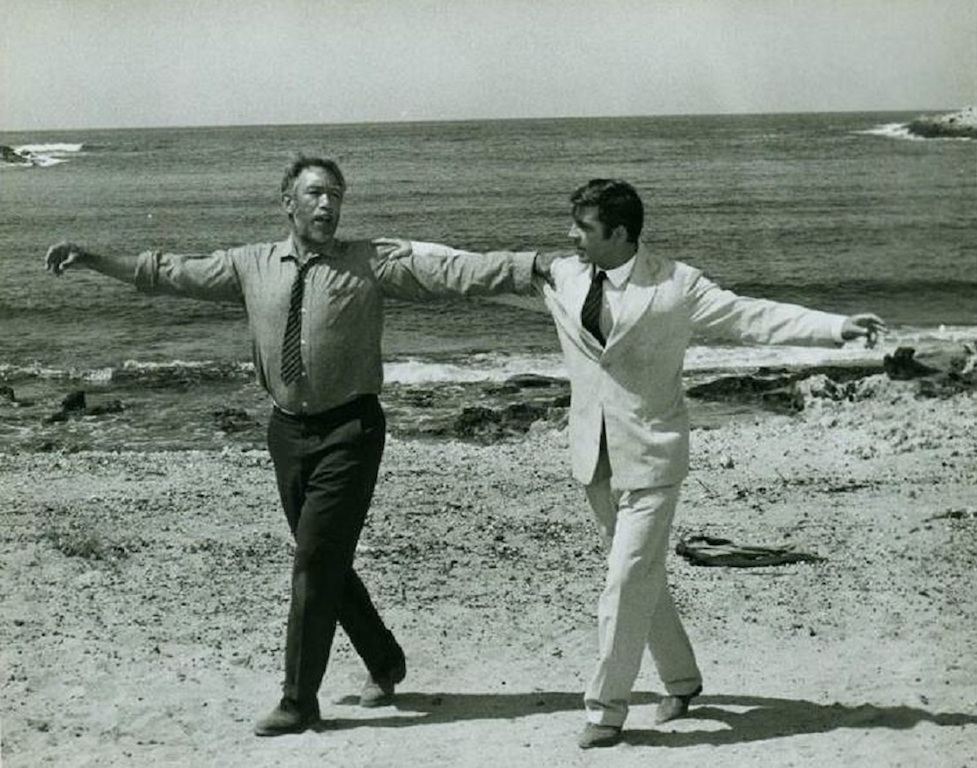
Zara was originally named after “Zorba the Greek”
As fate would have it, apparently at the time, Zorba was a popular name for shops in Spain. Just two blocks down the road, there was a bar named Zorba. The bar owner approached Amancio and explained that two Zorbas would be confusing. This put Amancio in a predicament. He already had the molds made for his Zorba store sign. The resourceful billionaire-in-the-making decided to change his store’s name to Zara, using the molds for the letters from the sign for Zorba. It was genius, and, history in the making.
The rise of the Zara empire
The Zara brand slowly expanded from the small town in Spain to the rest of the country and then later to Portugal. Eventually, the brand expanded to include stores in the United States, France and most of Europe by the 1990s.
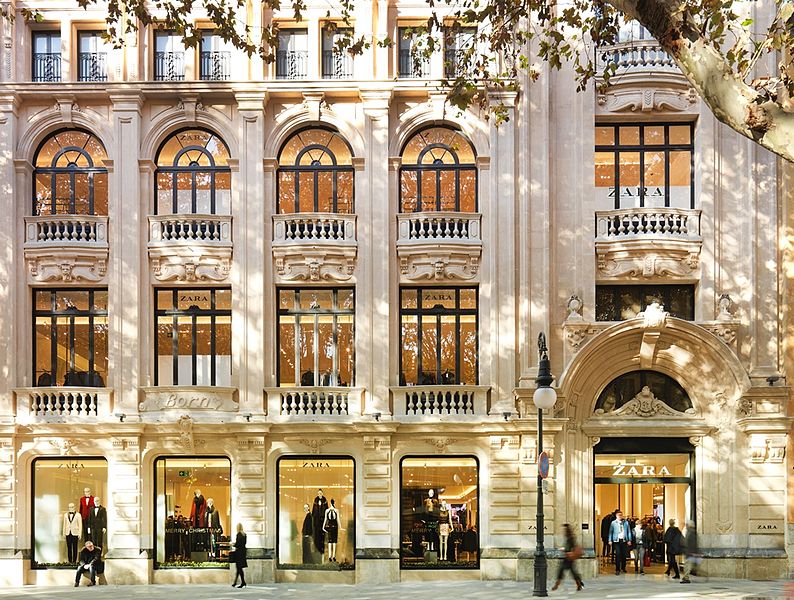
Zara’s store in Mallorca, Spain
What exactly is Zara’s secret to success? One way the brand differs from retail brands is also a key reason Zara successfully triggered growth and rapid international expansion. The brand offers something others do not. Not only do shoppers enjoy affordable fashion at Zara, they also have a non-stop supply of new collections, continuously setting new trendy clothing to purchase thanks to the innovative Zara eCommerce strategy. It’s a phenomenon only Zara has mastered. Here’s how:
Creating new fashion trends at the speed of light
If it seems as though Zara is constantly displaying their newest clothing line in their shop windows and highlighting new collections on their Zara eCommerce platform, it’s because the brand has a 21-day policy of turning over new fashion to the marketplace.
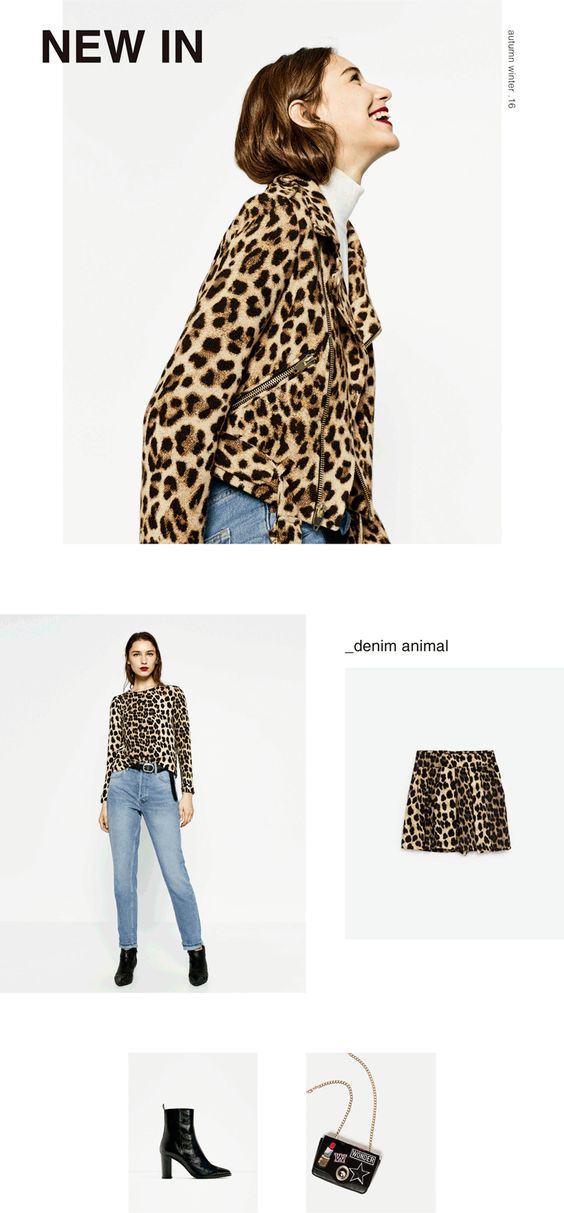
Zara announces a new collection
The bottom line is that this policy enables Zara to design, produce and stock a new fashion design throughout its international stores in less than a month. This unique fashion design process allows Zara to utilize their brick and mortar and Zara eCommerce shop channel by providing their shoppers with the latest trending fashion.
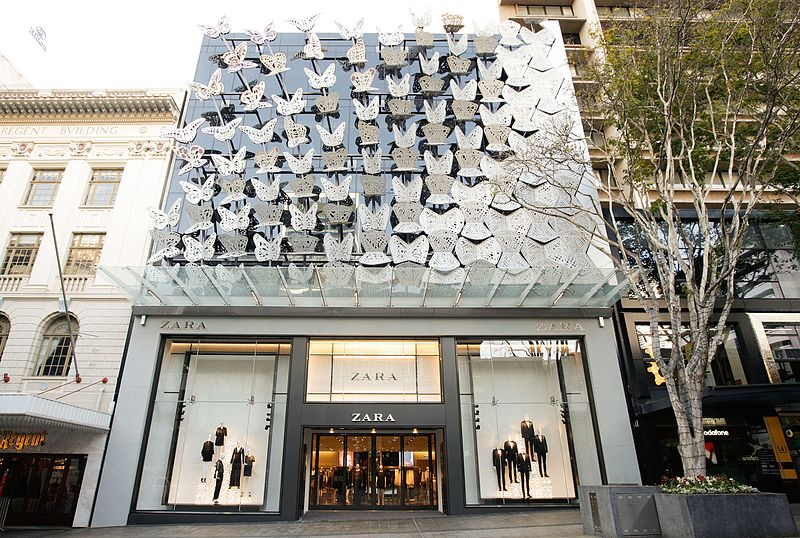
Zara’s Brisbane store
Nowadays, the brand is the world’s largest retailer. Zara’s eCommerce strategy has made the retailer one of the most successful fashion eCommerce stores and Amancio Ortega is the 4th richest man in the world. Inditex, the parent company of Zara, also owns other fashion retail giant brands such as Zara Home, Zara Kids, Bershka, Massimo Dutti, Oysho, Stradivarius, Pull&Bear, and Uterque. Overall, Ortega’s empire produces over a billion garments annually which are sold across 7,292 stores in 93+ markets around the world. The brand continued to grow and in 2016, Inditex’s net sales soared to €23.3 billion, a 12% increase, year-on-year.
With around 2259 Zara stores in 96 countries around the world, Zara has conquered the brick-and-mortar scene. The truth is, when it comes to eCommerce, Zara’s online strategy dominates that scene, as well.
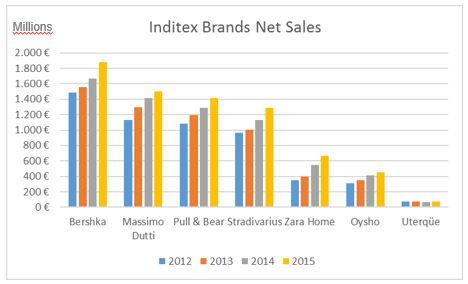
Chart of Inditex’s revenue and growth across all brands
Zara’s current CEO, Pablo Isla, took over as chairman of Inditex in 2011 when Ortega stepped down. Isla continues to deploy an expansive, omnichannel marketing strategy to boost Zara’s eCommerce revenue and presence to dominate the online fashion industry.
Amancio Ortega: The man behind the titan
What does a brilliant-minded billionaire look like? This is a hard question to answer when it comes to the man behind Zara, the elusive Amancio Ortega. The simple man, who prefers to wear an unassuming blue blazer, white shirt, and gray trousers — none of which are Zara products — is truly low-profile and is known for preferring to live a “simple lifestyle”. In fact, up until 1999, there wasn’t even a published photograph of Ortega on record. In fact, he has only granted interviews to three journalists throughout his entire career.
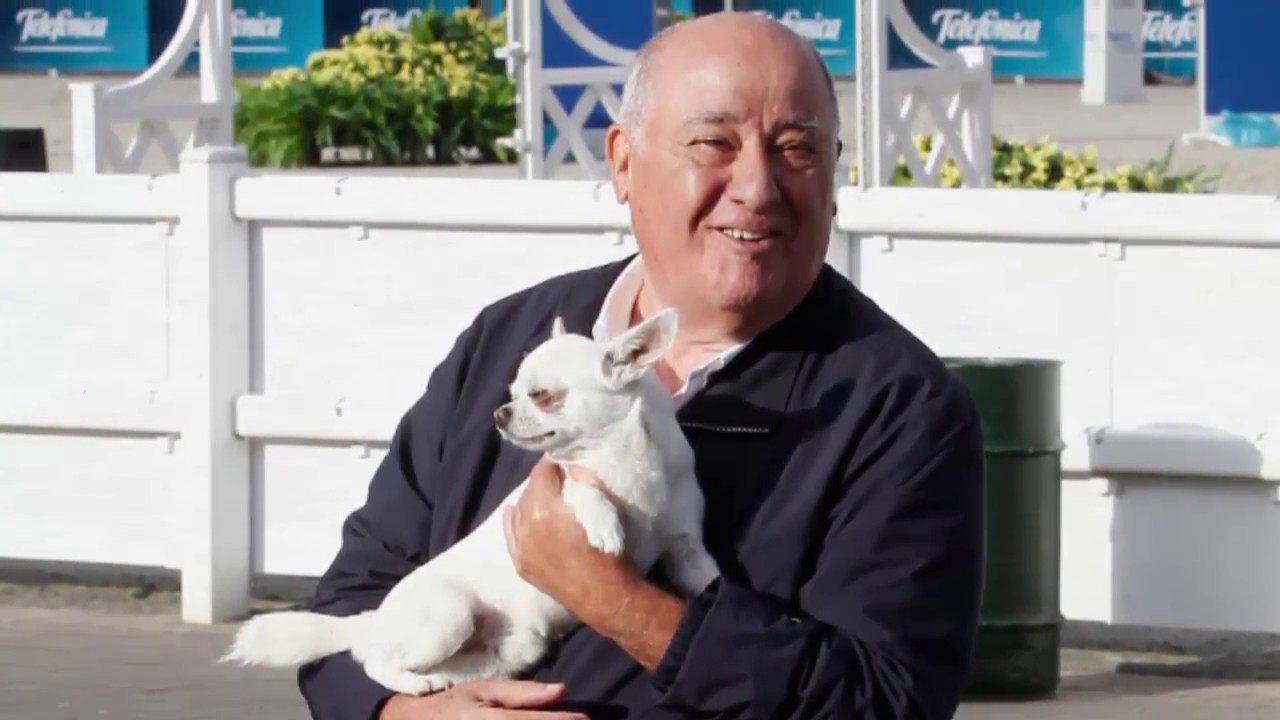
Zara’s founder, Amancio Ortega
A famous quote from the man himself might explain why, as he once said, “You must appear three times in the newspapers: when you are born, when you get married, and when you die.”
From humble beginnings…
Fashion came into Ortega’s life from a young age. Some might call it either a twist of fate or destiny. Ortega, the youngest of three children, was born in Busdongo de Arbás, León, Spain.
At the young age of 14, Ortega left his formal education behind, dropping out of school to move to La Coruña. It wasn’t long after arriving in La Coruña that he found a job as a shop hand for a local shirtmaker called Gala. This was the beginning of the legendary Zara which we all know today. It all started in a little corner shop in downtown A Coruña where Amancio learned to make clothes by hand. The shop still remains today.
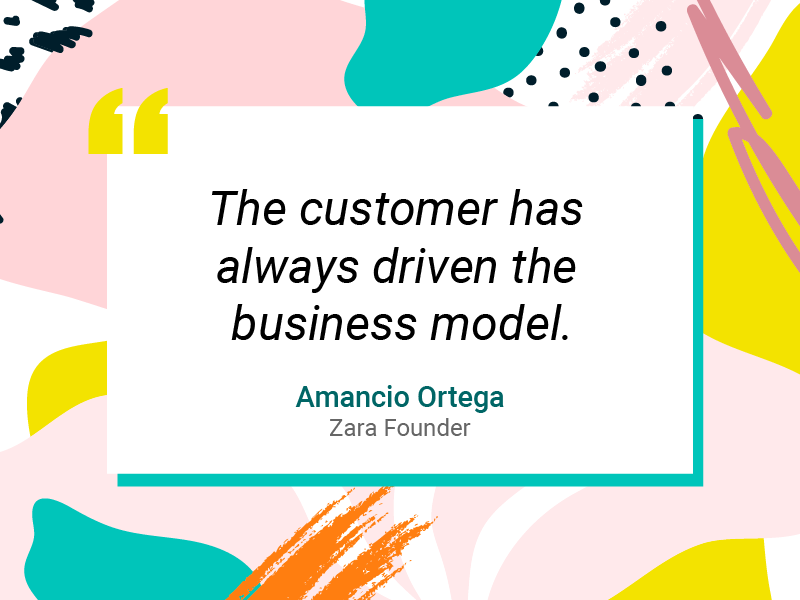
One of many famous quotes by Amancio Ortega
Over the years, the quirky and quiet Ortega has stayed committed to growing Zara with the same mission in mind — creating an affordable fashion line and unforgettable customer experience: “One thing hasn’t changed – the innovative spirit and urge for improvement that was the driving force back then,” he is quoted as saying.
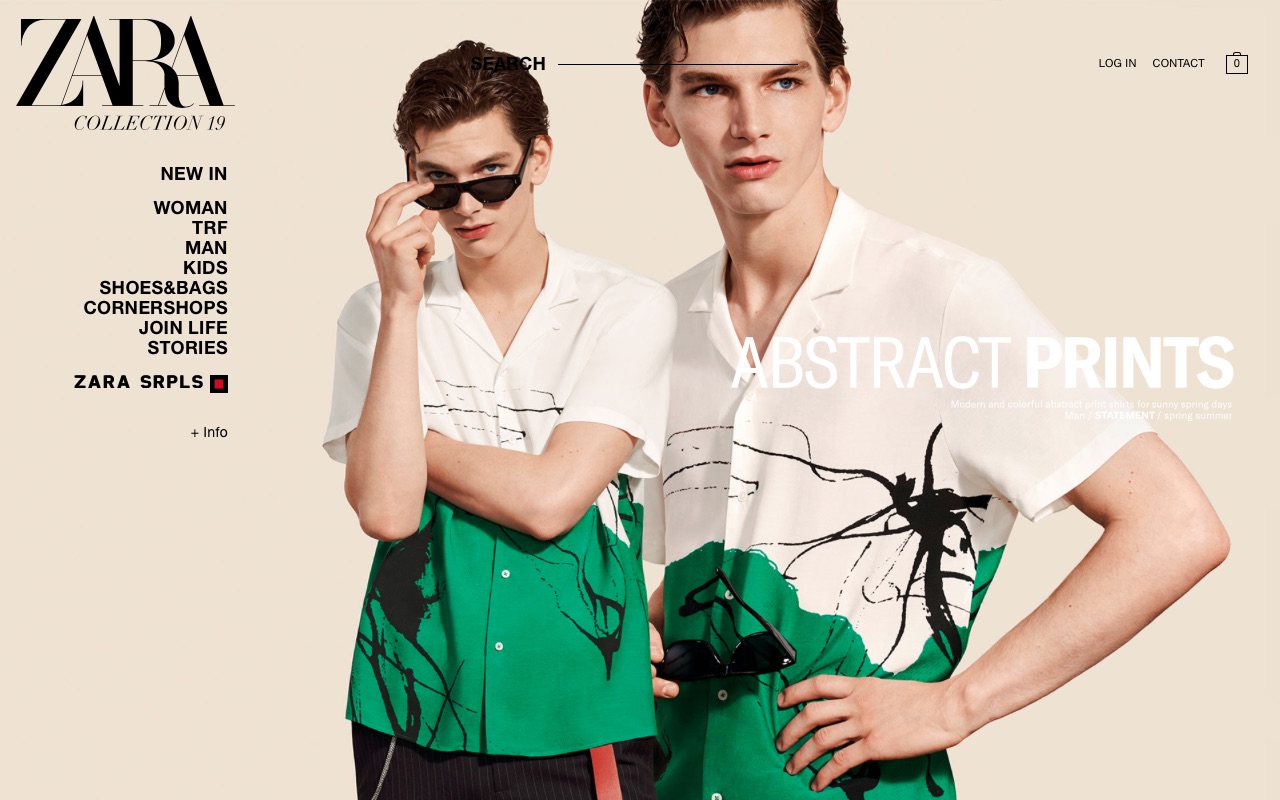
Zara eCommerce’s 2019 Spring collection
He is a man who sees beyond himself and believes in paying it forward. In 2012 he donated about €20 million to Caritas Internationalis, a Roman Catholic relief organization.
Also, Amancio has found some unique ways to spend the billions he has reaped. He is the owner of the Torre Picasso skyscraper in Madrid as well as the Epic Residences and Hotel in Miami, Florida.

The eCommerce strategy Zara used to scale
As Amancio Ortega once said: “The customer has always driven the business model…”
This is the secret to Zara’s eCommerce and online marketing strategy success. It takes more than having a great product selection with trending styles to be an eCommerce success. Shopping has evolved over the years and everyone shops online.

Zara eCommerce website homepage
This has inspired an expansion marketing and business strategy for Zara eCommerce. The result? Expanding the brand’s eCommerce arm to operate in over 41 countries. In 2018, Zara eCommerce announced it would offer its customers same-day delivery in cities where it has established both stores and eCommerce.
Zara’s eCommerce platform and its use of technology to enhance shoppers’ experience is the key to the brand’s competitive advantage. Here are some of the highlights of how the brand has successfully risen to the top of the online fashion world:
Automated Tactics and integrated stock management
At the root of the marketing strategy for Zara eCommerce is the combination of omnichannel marketing with a sophisticated integrated stock management system.

Zara uses automated marketing to announce sales to subscribers
Zara’s eCommerce strategy uses an automated marketing platform for sending relevant and timely emails notification to shoppers regarding everything from order status updates to back in stock notifications, and so on. Zara’s international business strategy has laid its foundations on the entire customer journey; the brand keeps its messaging on-target and personal, catering to the shopping needs and web-behavior.
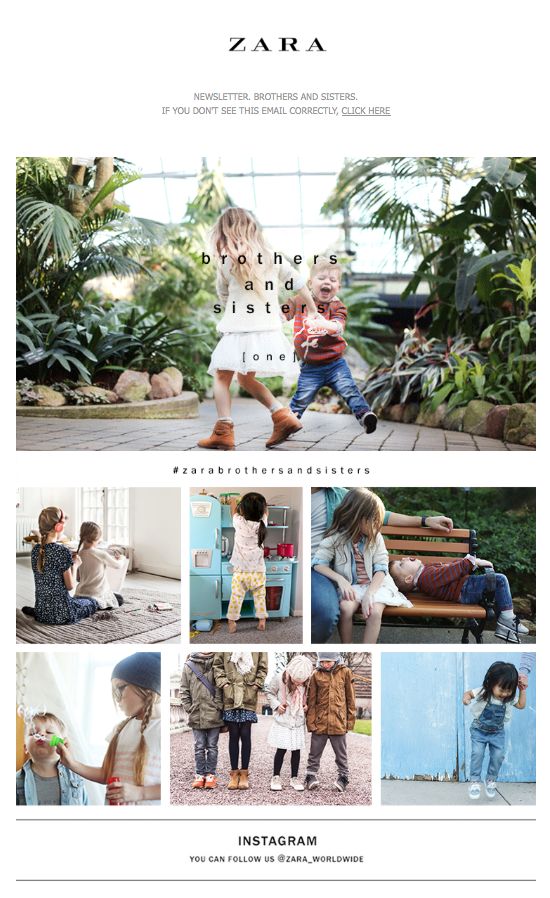
An example of Zara’s newsletters
Besides having a Zara eCommerce website with loads of product images, sizing tips, and information, it is also incredibly easy to navigate. Likewise, Zara’s mobile app is fast, user-friendly, and makes for a slick visitor experience.
Zara’s eCommerce marketing tactics focus on the big picture. Chairman and CEO, Isla, recently announced to journalists at the reopening of the global Zara flagship in Milan that Zara plans on conquering the global online market. “We want to make our fashion collections available to all our customers, wherever they are in the world,” he said, adding, “even in those markets which do not currently have our bricks-and-mortar stores.”

Zara online shopping experience
Tapping into RFID technology
Zara also incorporates the latest technology to fulfill customers’ online orders with store stock to satisfy same-day or next-day orders. This is accomplished using RFID and integrated stock management which is currently available in Zara stores in 25 markets. In fact, by 2020, Isla recently announced that all the countries in which there is a physical store presence will adopt the integrated stock management system.
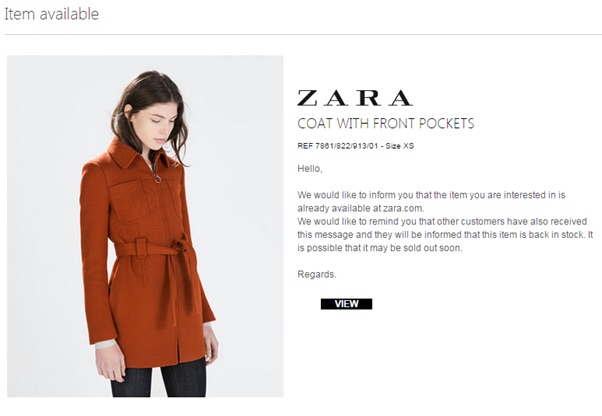
Zara uses automated marketing to let customers know when their items are in stock and available to purchase
Keeping up with the latest marketing technologies and trends, Inditex announced in 2018 that it is investing in logistics robotics, as its brands continue to expand their online presence to reach new markets and have an increasing amount of order to fulfill. Of course, at the forefront of this innovation is Zara. The brand has begun exploring a new store concept — using robots to deliver products ordered to customers from nearby warehouses.
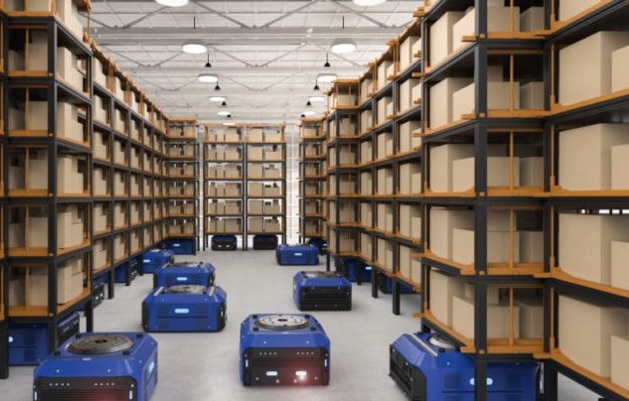
Zara has started using logistic robotics to fulfill customer orders
Customers are co-creators at Zara
How exactly does Zara continue to satisfy its online and offline customers’ needs of the latest trending fashion in such a fast and efficient manner? Simple. Zara implements a digital marketing strategy unlike any other brand in the fashion industry — essentially using customers as “co-creators”.

Zara offers its customers the latest trends via their international eShops
This is how it works: The brand is technology-focused and uses their deep-data template to not only anticipate what their customers want but rather they use online customer feedback to produce and influence the latest designer trends. Then, they quickly get those designs into their shops and online platform to sell — for a fraction of the price of what other designer brands cost. In fact, all eight of Inditex’s major retail brands use this same marketing practice. It’s that simple. Also, it’s that genius.
Impressive Zara stats you didn’t know
You already know that Zara is all about breaking new frontiers in fashion. However, the brand is also a pioneer in setting new standards and records. Yep, it’s true. Here’s a list of stats to inspire every marketer.
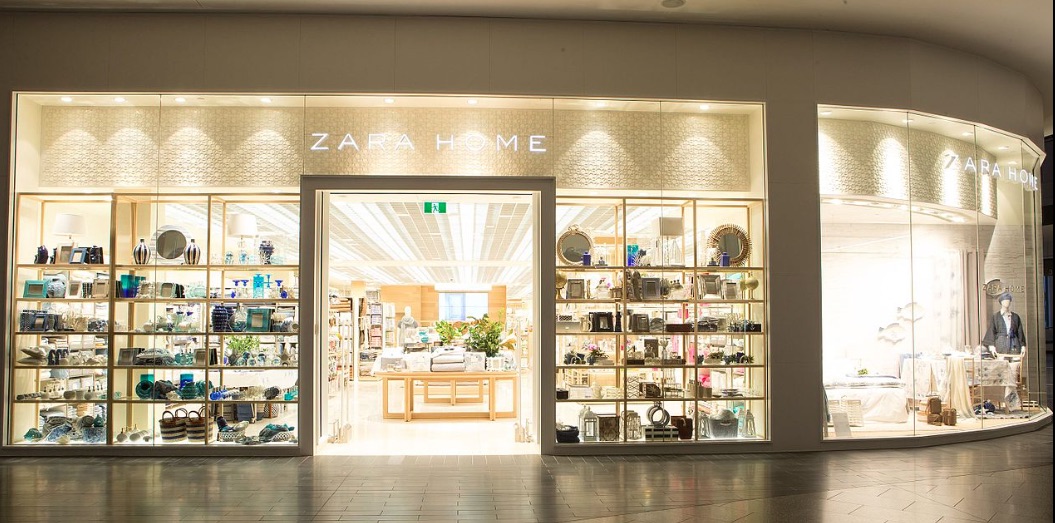
Zara Home is another top performer for the Inditex group
- There are 6,000+ stores under parent company Inditex, including Zara, Massimo Dutti, Oysho, Zara Home, Kiddy’s Class, Tempe, Stradivarius, Pull and Bear, and Bershka — with over 92,000 employees
- Almost 80% of Inditex’s investments are for opening or refurbishing stores
- 20% of Inditex’s investments go towards building its technology capabilities
- Zara has 21 day policy for releasing new fashion designs to market
- Spain still accounts for the majority of the business Zara does with business with 313 stores.
- China is the second largest consumer market with 193 Zara stores
- In 2017, Zara’s eCommerce revenue increased by 41% for the fiscal year
- More than 10 million shoppers visit Zara’s website each day
- Zara is ranked No. 390 in the Internet Retailer 2017 Top 500
- While its parent company, Inditex SA, is ranked No. 500 in the Internet Retailer 2018 Top 1000
- In 2018 Zara also opened its first pop-up store in London — designed for collecting online orders
- By 2020 Zara and other Inditex brands will be available online everywhere in the world — to become one of the first global clothing brands
- ECommerce accounts for 10% of Inditex’s sales in 2018, and increase of 40+% year-on-year
- An interesting Zara eCommerce case study shows the retail giant has grown its brand with little to no advertising, going out of its way to invest in prime real estate and opening flagship stores in popular and prime locations — making them neighbors to luxury brands such as Prada and Chanel.
Not to be left out: Zara’s impressive commitment to the environment…
- By 2020 Inditex plans to have an eco-efficiency plan operating in all of its stores around the world. The plan aims to deliver energy and water savings of 20% and up to 50% compared with conventional stores, respectively.
- Inditex has already implemented its eco-efficiency plan in 80% of its brands’ stores, including 100% of its stores located in China
Tip: If you are interested in more fashion retail case studies take a look at our other in-depth articles:
- Farfetch Case Study: Analyzing The Strategy of the UK Fashion Unicorn
- New Look: The Marketing Strategy Behind the UK Fast-Fashion Retailer
Famous quotes about Zara
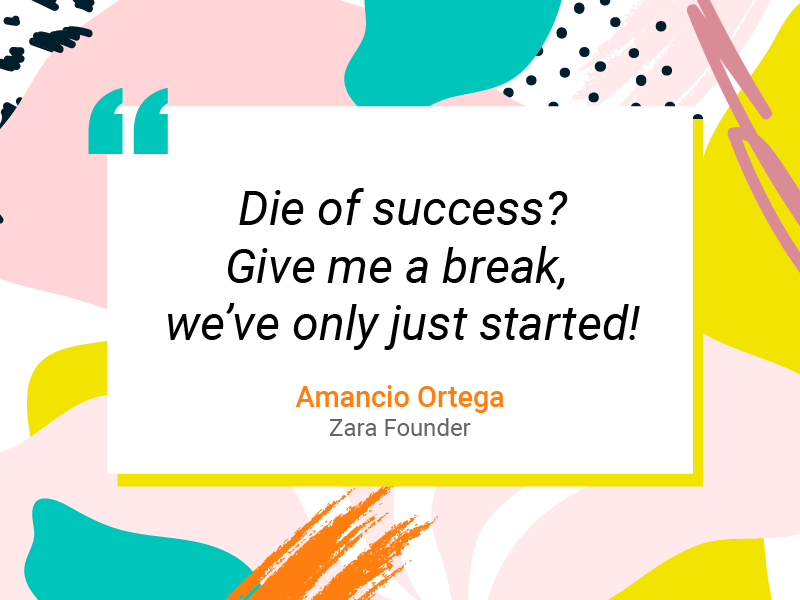
Another brilliant quote from Amancio Ortega
There are many lessons to be learned from Amancio Ortega’s insight and passion about Zara and his success. We thought the best way to inspire eCommerce marketers is to hear from the man himself. There were many to choose from, but we narrowed it down. Read on for some enlightening and motivating quotes from Zara’s awe-inspiring founder.
- “Die of success? Give me a break! We’ve only just started!”
- “The customer has always driven the business model…”
- “I am the property of my business, not the reverse.”
- “Attempt to seduce the customer with the latest fashion, the finest design, and the most attentive service.”
- “One thing hasn’t changed – the innovative spirit and urge for improvement that was the driving force back then.”
- (Speaking about his core goal) “To satisfy the needs of our customers with the latest in fashion.”
- “Companies are comprised of human beings without the effort, professionalisms, and motivation of whom, no achievement could be made.”
- “Innovation and commitment towards our customers define our corporate culture…”
- (In 2007) “We must be able to retain talent, keep our staff motivated and recruit new individuals in the company at a fast pace, and to achieve at the same time for the company a fresh look and the required ambition to be the driving force enabling us to meet new and ambitious purposes.”
Latest Zara news
- “Zara owner Inditex profits and sales hit ‘historic highs’ bolstered by online surge” (September 2021, source)
- “Zara’s global concept superstore at Bluewater” (December 2020, source)
- “Zara owner sees online sales surge 95% in April” (June 2020, source)
- “Zara owner Inditex to promote Carlos Crespo to CEO role” (May 2019, source)
Resources about other renowned fashion retailers
- SUPERDRY case study: The marketing strategy behind one of the top UK clothing retailers
- Why ASOS is the Absolute UK Ecommerce Success Story
- New Look: The Marketing Strategy Behind the UK Fast-Fashion Retailer
- Farfetch Case Study: Analyzing The Strategy of the UK Fashion Unicorn
- The Marks and Spencer eCommerce Case Study: 3 Growth Lessons for Retailers
What you can take away:
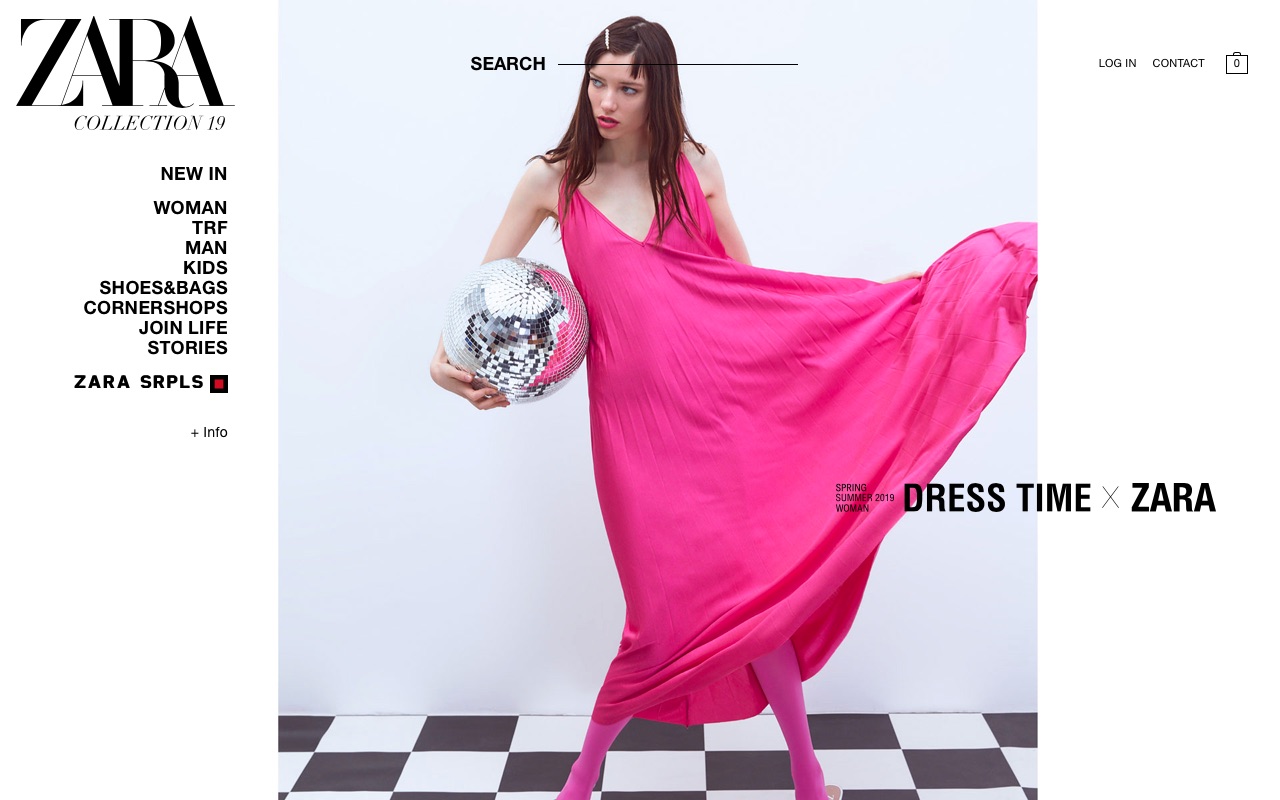
Zara eCommerce dominates the online fashion scene
Zara’s rise to the top of the fashion industry and their dominating eCommerce presence is an inspiration.
We encourage all eCommerce marketers to learn from Zara’s example by doing a simple analysis on Zara’s website. By combining an active, and not reactive marketing strategy with the latest big data technologies, the Zara brand had successfully created a marketing model where they can anticipate their consumers demand and react fast. Ortega’s passion for business, customer service and creativity is the stuff that makes legends. It proves that every marketer has the potential to grow their brands to new heights if they put their mind to it, just like Zara did with its branding strategy..
Set your brand’s goals, create a well defined and differentiating strategy, and launch your own marketing success story! After all, if there is one thing that we have learned from Zara’s success story, it’s that doers change the world. It’s your turn to succeed.

Let’s Help You Scale Up
Spending time on Linkedin? Follow us and get notified of our thought-leadership content:


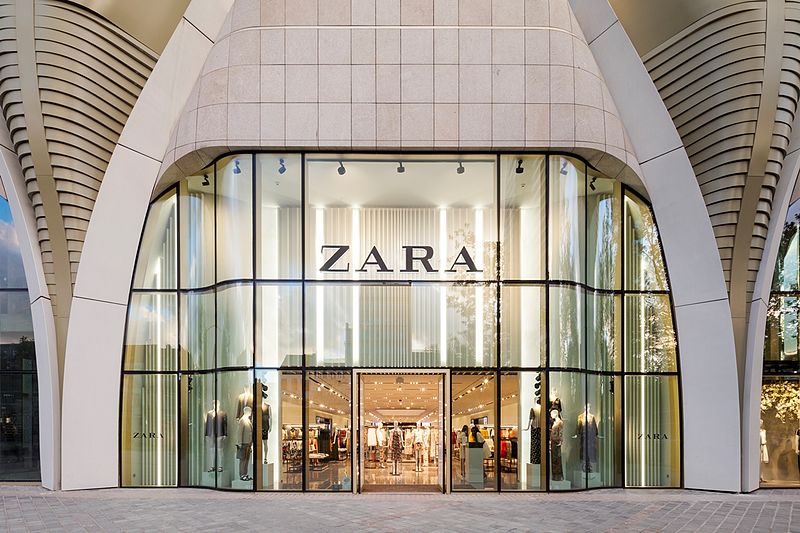
![Benchmarking Growth Strategies of Top Fashion Retailers [Study]](https://blog.contactpigeon.com/wp-content/uploads/2025/11/top-fashion-retailers.jpg)
